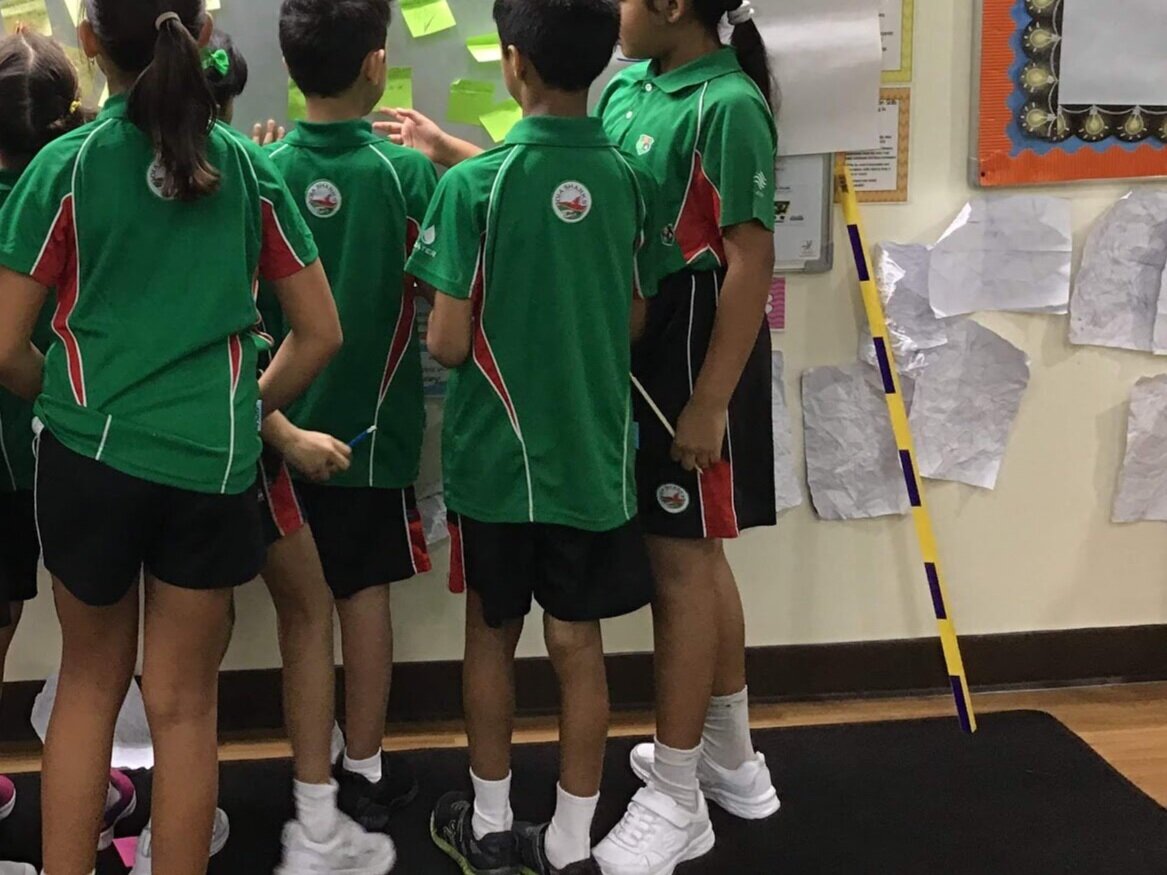Fostering a Culture of Communication: My best mistakes (4 of 4)
Earlier I had posted about starting the year with blank walls. You may have noticed that some of it gets filled fairly quick with the Essential Agreements, and they ways we like to learn. I also like to save a little spot for keeping track of “our best mistakes” This is a wall where we can post work that we had written a misconception and later learned was wrong, a math problem that we didn’t get before, or something we said and then realized was wrong. It takes a little to start this part of the wall getting things posted to it, and usually I like to get the ball rolling as I make mistakes all the time- and fessing up to the kids about it helps to build that acceptance of being a human who can make mistakes and doesn’t know everything.
I like doing this as it shows how we LEARN from mistakes and that mistakes are proof that we had tried to do something. This also is a great reminder that even your teacher doesn’t know everything. I’ve had some classmates or people I had worked with who would never want to look as if they didn’t know something, or say things like “Just don’t let the kids know that you don’t know.” And that is such a shame- because there is power in children hearing “I don’t know” from someone who is older and holds so much knolwedge in their eyes.
“I don’t know, but let’s try to find out,” helps students see that everyone is a learner and also avoids the idea that there are some people who know everything. Or “Oh wow, I was totally wrong on that one, now I know…”
This space on the wall is usually surrounded with papers from another Jo Boaler exercise I like to start the year with that helps students to visualize what their brains are doing when they have struggle. I realize the video doesn’t have the great explanation of the synapses firing and connceting as it does when Jo explains it, but here at least is a guide on how to loosely run this lesson. This video was from an assemly during covid- but during a normal school year its fun to crumple and throw the ideas at the board. I like to write the word’s THIS IS HARD! at the board and we throw our papers at that…
So celebrating mistakes and things being hard in the beginning of the year and creating a space for that reminder is another good use of a time period up front. It helps to create that safer feeling environment of helping to show students it’s okay for things to be hard, or for us to be wrong because that means we are going to be learning.
Note the crumpled brain synapse photos to the right of the children…

